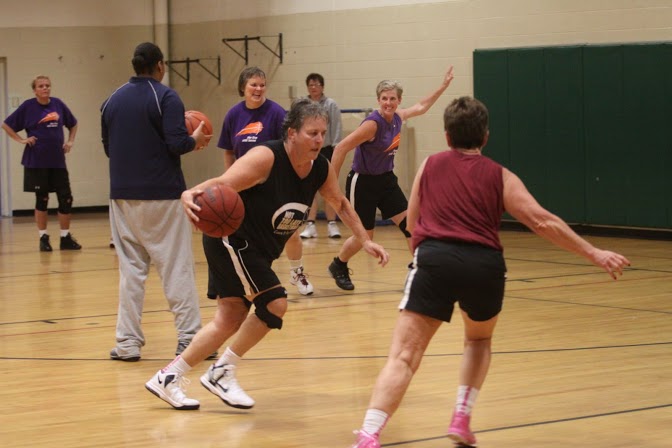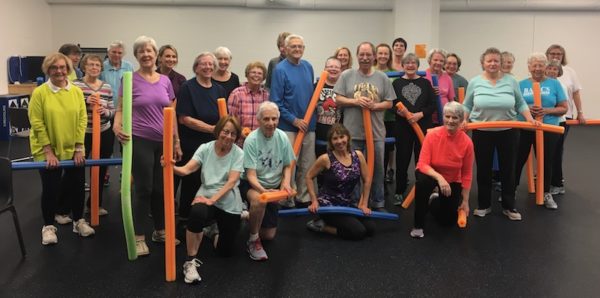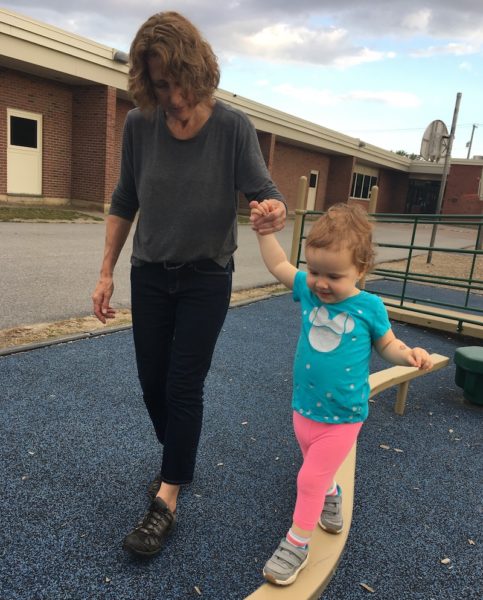A couple of years ago, I wrote about how I try to be active but didn’t feel as quick or as flexible as I used to be. One place I noticed it was getting in and out of my car. I was, well, let’s just say clunky and not too graceful.
I’m happy to report that things have improved. I know it’s because I work out with strength trainer Andy Wight on a regular basis. In fact, I was at his gym first thing this morning — strengthening not only my body but also my mood on this dreary, rainy day.
“Exercise offers so many benefits linked to energy, mood, endurance, sleep, mood, weight, and socialization,” says Mike Moras, a physical therapist at Back in Motion Physical Therapy. “These are important benefits throughout life for everyone from their 20s to their 90s.”
I asked Mike for some suggestions on how we can be physically active throughout our lives, no matter what our age.
20s, 30s, and 40s
When you are in your 20s, 30s, and 40s you tend to be in the best shape of your life and the healthiest you are going to be. It might be appealing to do individual activities like run or bike but it can be even more appealing to join an organization like Casco Bay Sports and take part in any number of group sports they offer.
There are also several running groups in Maine that might appeal to individuals in their 20s, 30s, and 40s that can help you go from living a sedentary lifestyle to running a 5K or even further.
More recommendations
20s
- Choose something you enjoy doing.
- It’s important to get a cardio workout — one that gets your heart rate up and makes you sweat.
- You also need to do some sort of weight training. It will keep your bones, joints, and muscles healthy and may help prevent issues (like osteoporosis) down the road.
30s
- Choose something you enjoy, but make it a safe choice.
- Cross train. Run. Do weights. Take a spin class once a week. Mix it up.
- Don’t do the same routine every day. If you work out five days a week, don’t do the same muscle groups each day or don’t use the same machine. Maybe do legs one day, upper body the next. Core body strength one day, the elliptical the next. Treadmill one day, stair stepper the next. It will help prevent overuse injuries.
40s
- Get out and jog or go for a walk.
- Do some kayaking or go for a weekend hike.
- Look for physical activities you can do with your family.
- Don’t try to break your personal record on your 5K or 10K or go for a 50-mile bike ride on the weekend. If you do, you might be reeling in pain for the next few days.
- Continue to include a cardio workout and some weight training.
Here in Maine, there are also groups like VAST (Veteran Adaptive Sports Training) which is for Veterans with disabilities. VAST offers a number of sports activities to help keep disabled veterans active. This can apply to veterans from their 20s to their 90s.
And whether you are a veteran or not, Maine Adaptive Sports and Recreation offers several year-round activities for people with disabilities.
50s, 60s, and 70s
As you enter your 50s, 60s, and 70s, it may be more appealing to join a walking group at the local mall, take part in pilates, yoga, zumba, swimming, dancing, or roller skating. I have had many patients in their 60s and 70s who became involved in roller skating again, which is great for endurance and balance. Others have joined local dance groups like Maplewood Dance Center. All of which are good improving socialization, mood, sleep, endurance and strength.
More recommendations
50s
- Continue to get your heart rate up. It’s important throughout all the decades.
- Swimming gets your heart rate up but is gentle on joints and bone.
- Still work those muscles and joints, but chose a lower impact activity. Try an aerobics class, for instance.
- Walk 45 to 60 minutes every day if you can squeeze it in. (Walking the dog counts.)
- Play some basketball
- Play some hockey
60s, 70s
- Look for non-impact ways to increase your heart rate.
- A pool is a great place to exercise.
- Walk, walk, walk. Explore local walking trails.
- Ride a bike — stationary or pedal.
- Consult with a physical therapist or personal trainer for some professional advice. He/she can look at your past medical history and your current situation and help you come up with an individualized plan.
80s and 90s …
As you enter your 80s and 90s, you may be forced to slow things down bit. You might join a local community center and do exercises in a group or do water exercise at a local pool aimed for older adults. At this age you might need to break up your activity throughout the day but it is important to try and sneak it into your schedule. The socialization aspect of group exercise at this age is very important to prevent depression and improve overall mood.
More recommendations
80s+
- Ride a stationary or recumbent bike.
- Do pool aerobics.
- Find an exercise class geared to older people.
- Try t’ai chi (great for balance.)
- Keep your big muscles — glutes (butt) and quads (thighs) — strong.
- Continue walking.
If you have any concerns about starting a new activity or exercise routine, check with your doctor or physical therapist and consider working with a qualified strength coach or personal trainer.
Mike also has some ageless advice:
- Always listen to your body. If an exercise hurts so much that it makes you not want to do it anymore, find something else.
- If you’re achy and sore for a few days, that’s normal.
- Intolerable pain that lasts is not normal. Don’t try to push through it. Forget the mantra “no pain, no gain.”
- If you’re doing an activity and it starts to hurt, stop and stretch, take a break.
- Don’t stop an activity cold turkey. For instance, when you’re done on the elliptical machine, cool down. Walk around a little.
“Above all, avoid doing nothing,” says Mike. “There’s something out there for everybody.”
Don’t give up
If you need even more inspiration, check out these Catching Health Fitness blog posts. And no matter what your age, give it time and stick with it. Don’t give up! If your goal is to lose weight, gain strength, or gain endurance, you’re not going to see results in just a few days. Too many people give up on exercise before they even get started. Biggest excuse? They can’t fit it into their day. Mike and Andy both say that’s why it is important to make it part of your daily routine. No excuses.







Diane, I signed up with a student at Saint Joseph’s who is an Exercise Science major and a certified trainer. I see her 2 times a week. It’s wonderful!! I can highly recommend this sort of thing.
Sounds like a good blog post to me. I’ll be in touch.